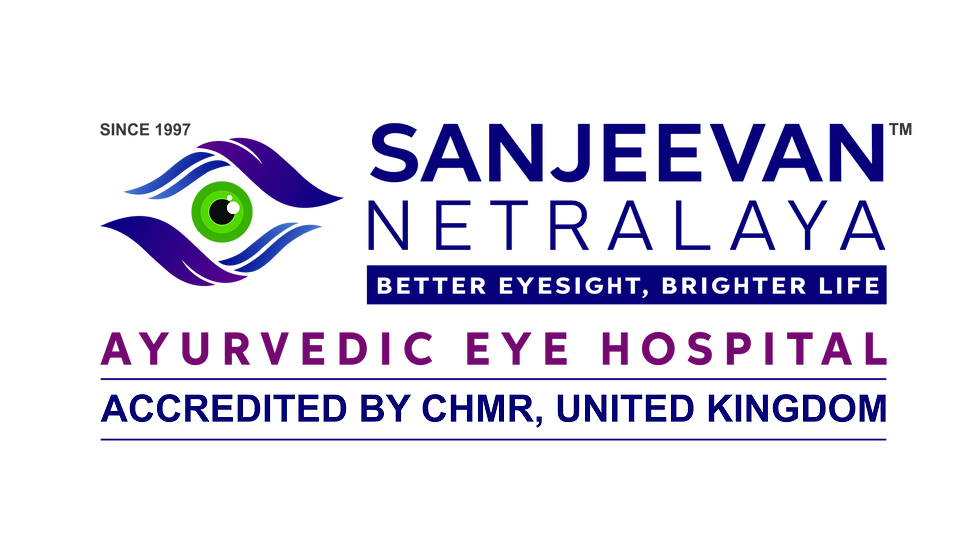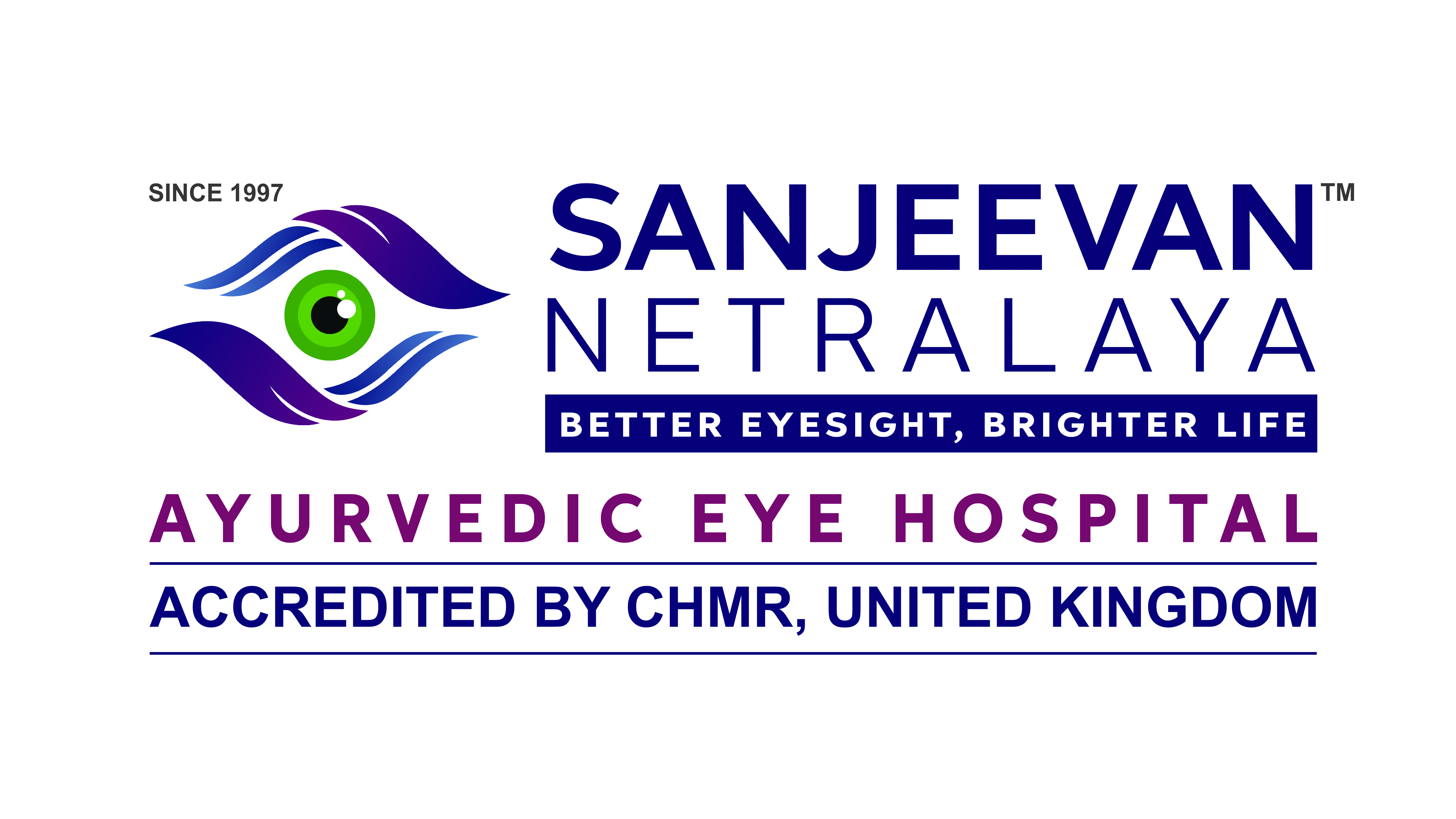
CRAO – CENTRAL RETINAL ARTERY OCCLUSION

What is Central Retinal Artery Occlusion
Central Retinal Artery Occlusion is a condition where blood flow to the retina is stopped. This is usually caused by a clot (or embolus) that travels to central retinal artery, and gets lodged in the vessel. The blockage cuts off blood flow to all of the retina. Permanent vision loss can be prevented by prompt medical attention for CRAO. The vision loss in the affected eye is often permanent and will cause vision loss. CRAO is similar to BRAO in that it can be caused by trauma, atherosclerosis and hypercoagulable states. It is important that CRAO is less common than BRAO but has a worse prognosis.
Sanjeevan Netralaya's Advanced Ayurvedic Eye Care has effectively treated over 6 lakh patients across India and successfully treats Central Retinal Artery Occlusion without causing any harmful side effects or discomfort. Do if you have any symptoms of Branch Retinal Artery Occlusion, do not prolong your treatment. Book your appointment at your closest Sanjeevan Netralaya clinic today.
What are the causes of Central Retinal Artery Occlusion
Central Retinal Artery Occlusion is caused by a blockage of the central retinal artery. This is the main blood vessel that supplies blood the retina. The causes of CRAO are the same as those of Branch Retinal Artery Occlusion.
1. Atherosclerosis is a buildup of plaque in blood vessels that can lead to blood clots in the retinal blood vessel.
2. Cardiac Emboli is a form of blood clots in the heart that travel to the retinal artery and become stuck and prevent blood flow.
3. Hypercoagulable states are medical conditions that increase the risk of blood clot formation, such as antiphospholipid syndrome and factor V Leiden deficiencies.
4. Giant cell arteritis is an inflammation of blood vessels that can cause blockage of the retinal vessel.
5. Trauma: A clot can form in the retinal vessel if there is an injury to the head or eye.
6. Vasculitis is an inflammation of blood vessels that can lead to narrowing or obstruction of the retinal vessel.
7. Carotid arterial stenosis: A narrowing of the carotid vein can lead to emboli that travel to the retinal bloodstream.
It is important to remember that CRAO can be caused by many factors. An ophthalmologist, along with other specialists, will need to examine the patient thoroughly in order to determine the cause of the problem and offer appropriate treatment.
Sanjeevan Netralaya's Advanced Ayurvedic Eye Care has effectively treated over 6 lakh patients across India and successfully treats Central Retinal Artery Occlusion without causing any harmful side effects or discomfort. Do if you have any symptoms of Branch Retinal Artery Occlusion, do not prolong your treatment. Book your appointment at your closest Sanjeevan Netralaya clinic today.
What are the symptoms of Central Retinal Artery Occlusion
The symptoms of Central Retinal Artery Occlusion can vary depending upon the extent and location of the occlusion. However, they are usually:
-
Sudden, unremarkable loss of vision: This is most common symptom in CRAO. It can cause mild to severe vision loss and even complete blindness.
-
Visual field defects: This is the loss of vision in one eye. There is usually no peripheral vision.
-
Blurred vision: Although this is less common in BRAO than it is in BRAO. However, it can still occur when the occlusion has been partial.
-
Color vision may change: Because the retina is not receiving enough blood, the affected area may appear grayish or white.
-
Redness in the eye may be caused by inflammation of blood vessels.
-
Headaches: Occlusion can cause headaches in some people.
-
Systemic symptoms: Other conditions, such as giant cell arthritis, can cause systemic symptoms like fever, malaise and jaw claudication.
It is important that you remember that symptoms of CRAO may appear suddenly and can progress quickly. Usually, within minutes. To prevent permanent vision loss, seek immediate medical attention if you have sudden vision loss or any other symptoms of CRAO.
Sanjeevan Netralaya's Advanced Ayurvedic Eye Care has effectively treated over 6 lakh patients across India and successfully treats Central Retinal Artery Occlusion without causing any harmful side effects or discomfort. Do if you have any symptoms of Branch Retinal Artery Occlusion, do not prolong your treatment. Book your appointment at your closest Sanjeevan Netralaya clinic today.
How is Central Retinal Artery Occlusion diagnosed?
Usually, Central Retinal Artery Occlusion is diagnosed by a combination eye exam and imaging tests. The following are some of the most commonly used diagnostic tests to diagnose CRAO:
1. Ophthalmoscopy is an examination of the eye with a special instrument called an "ophthalmoscope". This allows the doctor to view the blood vessels within the retina.
2. Fluorescein angiography is a test that injects a special dye into a vein. Photographs of the retina are taken to identify blockages in blood vessels.
3. Optic coherence tomography: This non-invasive imaging technique uses light waves to produce detailed cross-sectional images.
4. Ultrasonography of your eye: This is a test that uses sound waves and creates images of your eye, including blood vessels.
5. Doppler ultrasound: This is a test that uses sound waves in order to determine the direction and speed of blood flow within the retinal vessels.
6. Magnetic Resonance Angiography, (MRA), or Computed Tomography Angiography(CTA) are imaging tests that show blood vessels in the brain and eyes more clearly.
Sometimes, additional tests are required to diagnose the root cause of CRAO. These tests include blood tests to rule out blood clotting disorders and tests to assess the heart and blood vessels.
It is important to remember that CRAO can be a serious condition and requires immediate medical attention in order to prevent permanent vision loss. For the best possible outcome, it is important to get a prompt referral to an eye doctor who is experienced in retinal vascular disease.
Sanjeevan Netralaya's Advanced Ayurvedic Eye Care has effectively treated over 6 lakh patients across India and successfully treats Central Retinal Artery Occlusion without causing any harmful side effects or discomfort. Do if you have any symptoms of Branch Retinal Artery Occlusion, do not prolong your treatment. Book your appointment at your closest Sanjeevan Netralaya clinic today.
What is the treatment for Central Retinal Artery Occlusion
Treatment for Central Retinal Artery Occlusion is usually focused on preserving vision and preventing further vision loss. Once CRAO has occurred, there is no treatment that can restore vision.
1. Treatment for emergency: In the event of CRAO being diagnosed early, intra-arterial thrombolysis and intra-arterial Papaverine injection may be used to dislodge the clot. These treatments are not available widely and can be considered invasive.
2. Anticoagulation and antiplatelet therapy can be used to stop emboli from spreading if the underlying cause of the emboli is a systemic one.
3. Low vision rehabilitation: This is recommended for patients with severe visual loss due to CRAO.
4. Ocular treatments: If the occlusion is due to a retinal embolism or laser therapy, surgery may be performed to remove it and restore blood flow. However, these procedures are not very successful.
Important to remember that CRAO treatment should be started as soon as possible after diagnosis. However, once vision loss has occurred, there is no treatment that can restore sight. Most patients will experience permanent visual loss. The prognosis for CRAO is poor.
Sanjeevan Netralaya's Advanced Ayurvedic Eye Care has effectively treated over 6 lakh patients across India and successfully treats Central Retinal Artery Occlusion without causing any harmful side effects or discomfort. Do if you have any symptoms of Branch Retinal Artery Occlusion, do not prolong your treatment. Book your appointment at your closest Sanjeevan Netralaya clinic today.
Can Central Retinal Artery Occlusion be cured
Permanent vision loss can result from Central Retinal Artery Occlusion (CRAO). Treatment success depends on the cause, prompt diagnosis, treatment and how severe the damage to the retina.
If the occlusion has been caused by a clot, embolus, or other condition that can either be surgically or medically dissolved, prompt treatment can help prevent further damage to blood vessels and restore blood flow, although vision loss may still be present.
In most cases, however, vision loss is irreversible. Most patients will experience permanent visual loss.
It is important to remember that CRAO can be a serious condition and requires immediate medical attention in order to prevent permanent vision loss. For the best possible outcome, it is important to get a prompt referral to an eye doctor who is experienced in retinal vascular disease.
Sanjeevan Netralaya's Advanced Ayurvedic Eye Care has effectively treated over 6 lakh patients across India and successfully treats Central Retinal Artery Occlusion without causing any harmful side effects or discomfort. Do if you have any symptoms of Branch Retinal Artery Occlusion, do not prolong your treatment. Book your appointment at your closest Sanjeevan Netralaya clinic today.

